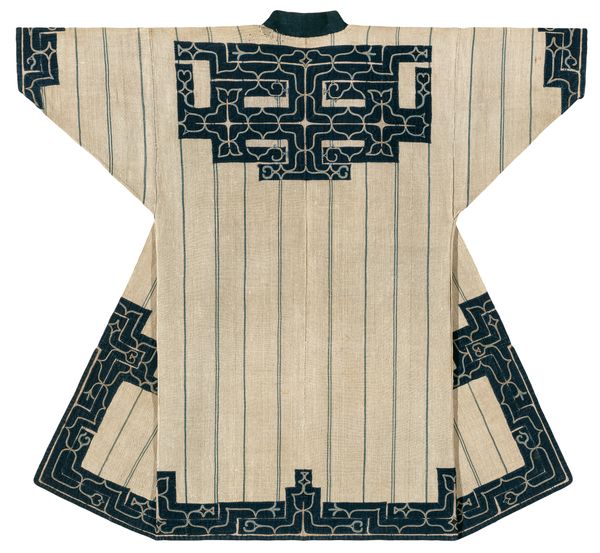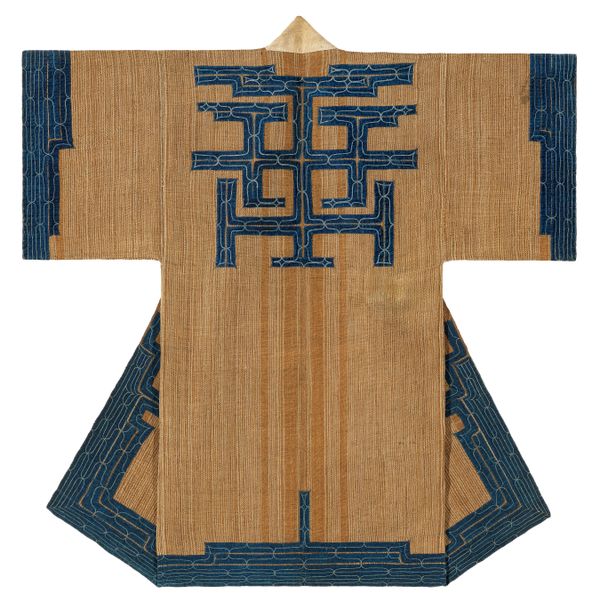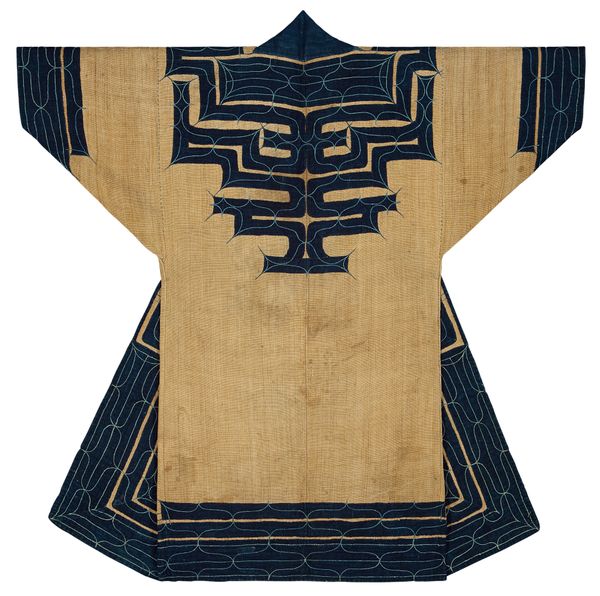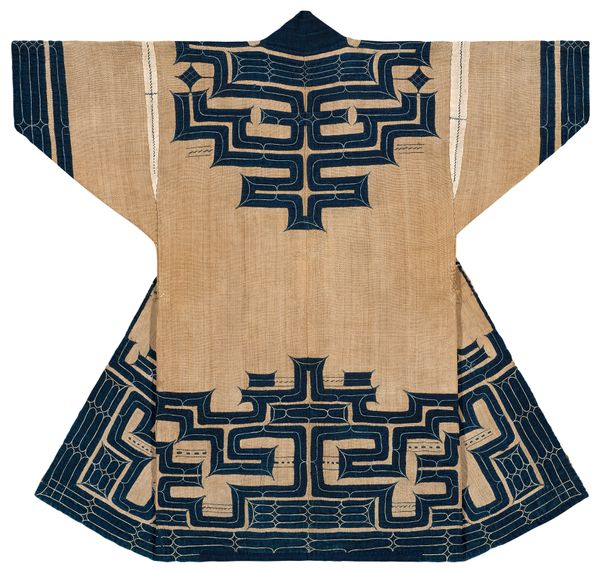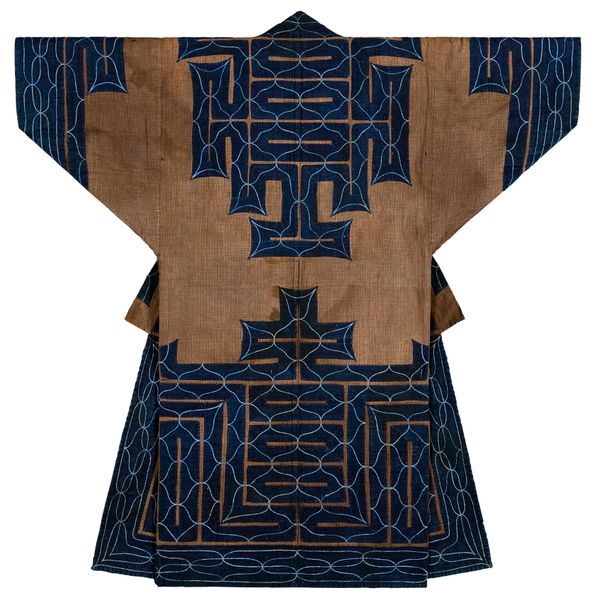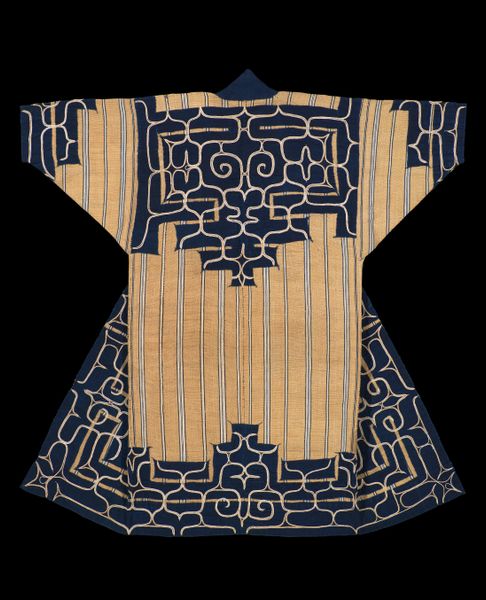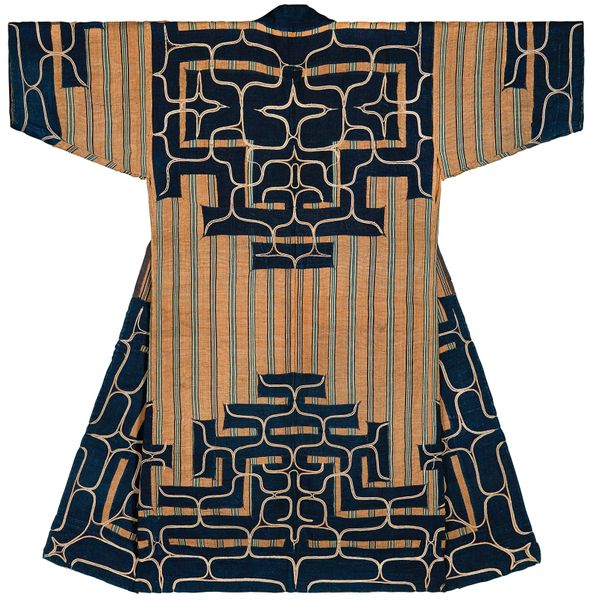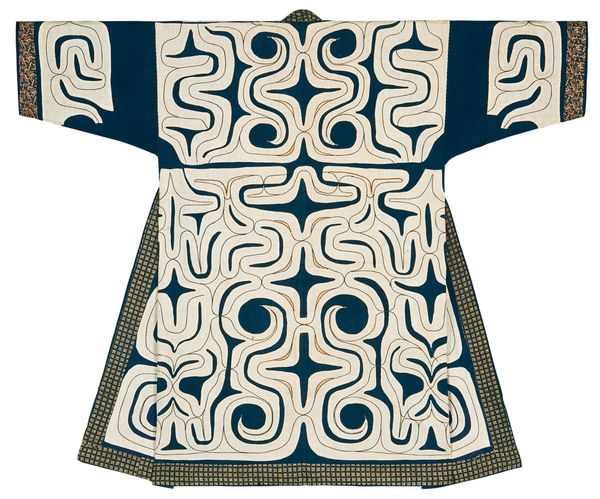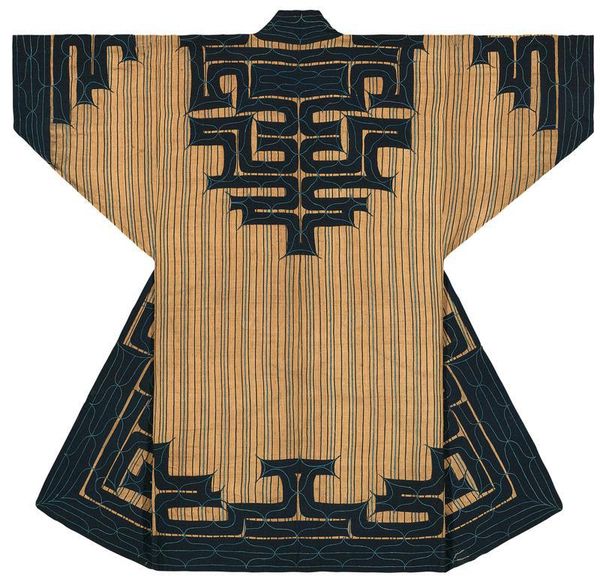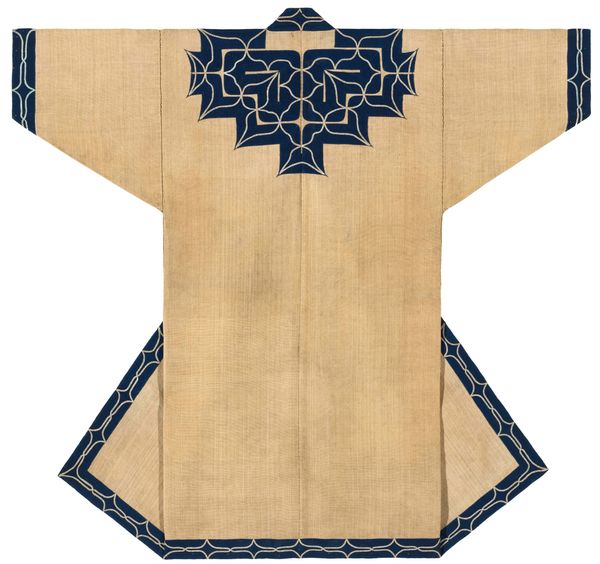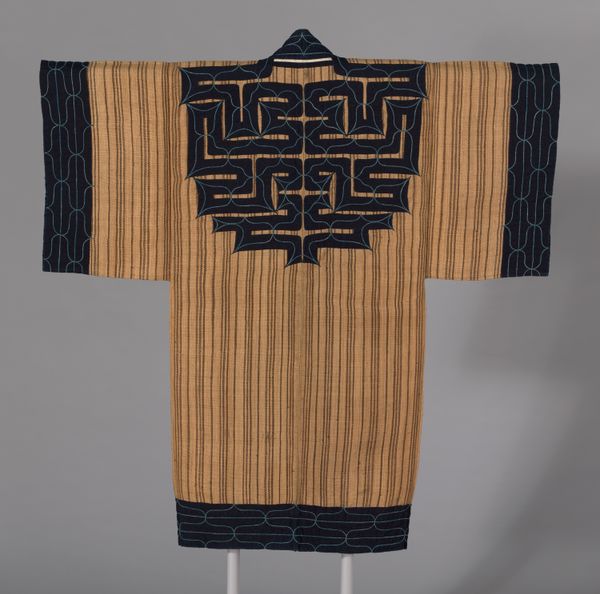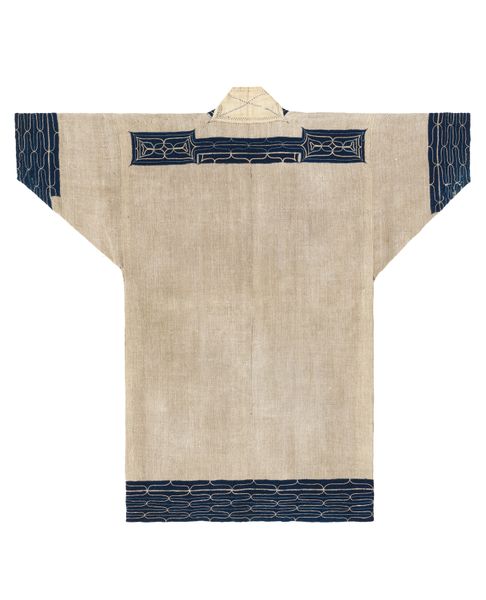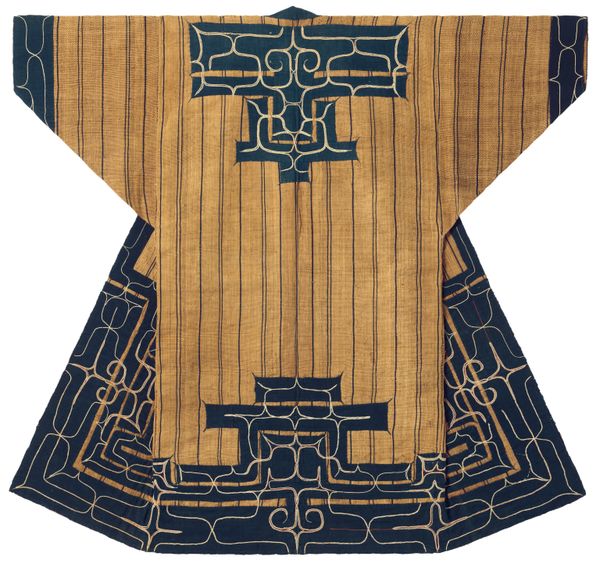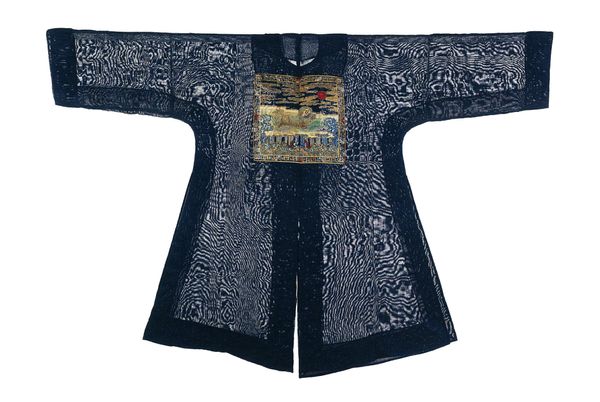
#
fashion mockup
#
collage layering style
#
fashion and textile design
#
fashion based
#
fabric design
#
clothing theme
#
clothing photo
#
textile design
#
imprinted textile
#
clothing design
Dimensions: 47 3/4 × 48 1/4 in. (121.29 × 122.56 cm) (overall)
Copyright: Public Domain
Curator: The Minneapolis Institute of Art holds this robe in its collection. It's a "Retarpe robe with detailed embroidery," created sometime in the 18th or 19th century. Look at the patterns stitched onto the natural ground, so intricate and carefully placed. Editor: It strikes me as powerful and almost architecturally rigorous. The geometric designs, predominantly in blue, are contained within strong borders and grids. It seems both visually balanced and structurally significant. Curator: The "Retarpe" refers to a specific type of garment worn by the Ainu people of Japan. Historically, these robes weren't merely clothing, they represented status and identity. Wearing such garments also played a crucial part in rituals and ceremonial contexts. Editor: And what kind of stories are stitched into those repeating motifs? The shapes are both abstract and feel somehow representative, calling to mind enclosed spaces or linked pathways. Do they act as a visual language, narrating specific myths or beliefs of the Ainu? Curator: Indeed! Scholars believe these repeating patterns are ancestral designs handed down through generations. The patterns could also indicate social affiliations or signal spiritual roles within the Ainu community. Editor: It’s captivating how a garment transforms into something much grander; an emblem, a cultural anchor. Each line, carefully placed, holds so much weight, speaking to community and the weight of tradition. You can almost sense the dedication involved in the craft itself. Curator: It absolutely reflects an intense social investment. Remember that Ainu society faced marginalization and discrimination, especially during the periods that this garment was created. Thus, to make this type of art was a cultural act of resistance. To don the garment in its ceremonies became the ultimate public expression of cultural identity. Editor: Now I can understand the gravity I felt right away. It's a profound assertion of identity. Looking at this robe, it's no longer just a textile; it becomes a standard against erasure and reminds us about the quiet power of symbolic representation to express pride, continuity, and a cultural will to survive. Curator: Agreed. This is far more than just historical dress; it’s a profound statement about cultural resilience, expressed through enduring motifs and meticulous craft. Editor: I will look at textiles from now on in a totally different way.
Comments
minneapolisinstituteofart about 2 years ago
⋮
Ainu people did not cultivate plants for textiles; instead, they harvested them in the wild. Retarpe robes are made from plain-weave nettle fiber, a durable, warm, and light-colored material that offered Ainu women a neutral backdrop for their intricate embroidery and appliqué. The Sakhalin Ainu, a distinct group of people from the Ainu of Hokkaido, produced retarpe robes like this one. Because of their proximity to China, the Sakhalin Ainu were in contact with the Chinese government dating from the 14th century. They exchanged fur for Chinese silk, which Sakhalin Ainu women incorporated into their robes, along with Chinese textile design patterns. Simple garments that lack an elaborate design on the back were more regularly used and not confined to formal occasions.
Join the conversation
Join millions of artists and users on Artera today and experience the ultimate creative platform.
